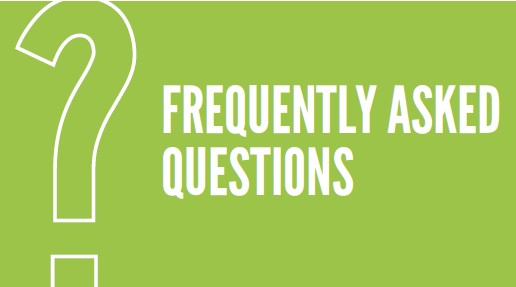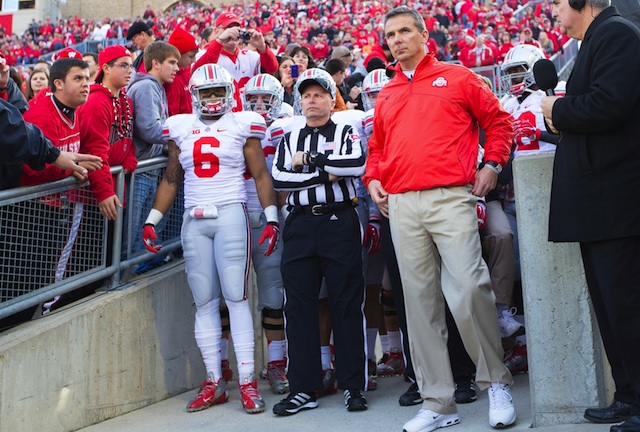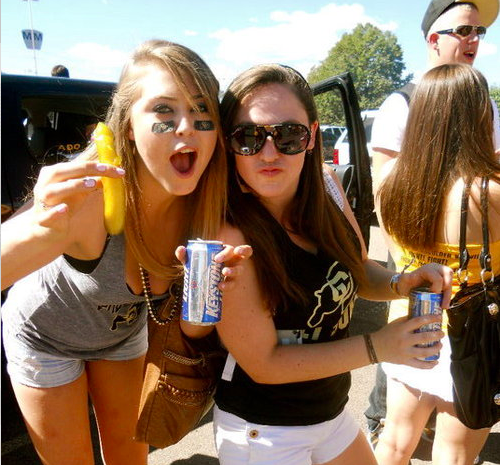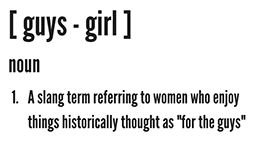SO WHAT IS ALL THE HYPE ABOUT?
The draft, to a casual observer, can seem interminably boring, with 10 minutes between picks for each team (it used to be 15). Yet, the draft sparks endless debate and speculation in the weeks leading up to it and is a can’t miss event for hardcore football fans. Many people even host draft parties, like Super Bowl parties, during which they watch and wait to see who their team will add. In short, any “real” football fan learns to love the draft as much as the game itself. With that in mind, here’s a quick Q&A to help enhance your appreciation of the NFL draft.
WHY IS THE DRAFT SO POPULAR?
The draft is the most important offseason event in pro football. And unlike baseball, where young players typically spend several years in the minor leagues before showing up on your favorite team, a first or second round NFL draft pick is (hopefully) a player who will be on the field doing great things the very next season. A bad draft can set a team back years, while a couple of good drafts can turn a last place team into a Super Bowl contender. With the huge impact injuries and salaries have on the NFL, continually adding young talent is crucial to maintaining a successful NFL team.
HOW DOES IT WORK?
The teams are seeded based on their prior year’s finish (so this year, the Kansas City Chiefs, who were the worst team, picked first, while the Baltimore Ravens, the Super Bowl champs, picked last each round). In the first round, each team has 10 minutes to make their selection. The time limit is decreased in later rounds and there are seven rounds in all.
WHY DOES IT TAKE SO LONG TO PICK? DON’T TEAMS KNOW WHO THEY WANT?
Yes and no. All teams have a draft board ranking the players who are left to choose from. Frequently (especially in the first round), teams may be talking to a potential player’s agent to make sure they can get the player to sign a contract once they draft him. In many cases, teams do not make their pick right away, even if they know who they are going to take, in order to field trade offers from other teams, just in case.
HOW WELL DOES A PLAYER’S COLLEGE PERFORMANCE TRANSLATE TO THE NFL?
A player’s performance in college is only one factor; and in most cases not the most important factor in determining when they will be picked.
SO WHAT DO THEY CONSIDER?
It varies by position. For a quarterback, skill sets like arm strength and accuracy figure heavily in the decision. Other factors include the players’ performance at the NFL combine, their psychological exam, their physical size and team needs.
WHAT’S THE COMBINE AND WHY SHOULD I CARE ABOUT IT?
The NFL scouting combine is a series of workouts over several days. Almost all eligible draftees attend (the only ones who don’t are those who are certain they will be taken with one of the first couple of picks so they could only hurt themselves at the combine with a poor performance). The drills include the 40-yard dash, the bench press and the shuttle, among other things.
SO WHOEVER IS BEST AT THE COMBINE, THEY’LL BE THE FIRST ONES TO GO?
Actually, teams have to be careful. The combine only measures physical performances on workout tests. A guy can run a bad 40, but if he was a speedster his whole college career, you may want to disregard that.
HOW CAN YOU KNOW WHO WILL BE PICKED NO. 1?
Lots of times you can’t, but it is a combination of how a player did in college, what kind of teams he played against in college (you play tougher players at a big school like USC than you do at Tennessee Valley State), how you perform at the draft combine, how well you interview, what position you play, and what the individual teams actually need.
WHO IS MEL KIPER, JR. AND WHY IS HE CONSIDERED A “DRAFT EXPERT?”
Mel Kiper, Jr. is a self-appointed “draft guru” who first appeared on ESPN’s draft coverage in 1984 as an analyst. A few years earlier, he recognized the demand for a centralized source of draft information on college players and began publishing The Draft Report. Kiper is well known for criticizing NFL teams for their draft selections, famously stating the N.Y. Jets “didn’t understand what drafting was about” following their selection of DE/LB Jeff Lageman in 1989 (Kiper believed that Lageman would have been available with a much lower pick) and getting into a public feud with then Indianapolis Colts general manager Bill Tobin, after the Colts selected linebacker Quentin Coryatt with the second overall pick in 1992.
WHAT IS TRADING UP AND TRADING DOWN, AND WHY DO TEAMS DO IT?
Trading up or down refers to using other draft picks or players to change your draft position. For example: let’s say the Philadelphia Eagles have pick No. 20, but want a player who they think will get taken at No. 12. They may offer the team with the No. 11 pick their No. 20 pick. To complete the deal, the Eagles may add something else (usually a pick in the later rounds, but sometimes a pick in a future year’s draft or a player) in order to “trade up” to No. 11.
WHY WOULD THE TEAM WHO HAS THE #11 PICK NOT USE IT AND TRADE DOWN?
The team with the No. 11 pick may want a player who they can still get at No. 20, so they can get an extra draft pick and still get the player they want. Or the team with the No. 11 may have been hoping for a certain player to fall to their spot but he may be gone. Sometimes, a team will trade down for economic reasons – you will have to pay the No. 11 pick more money than you will have to pay the No. 20 pick.
WHO DECIDES WHO TO PICK?
It varies by team. It can be the owner, general manager director of player personnel, the coach, or a “committee” that is a combination of people.
WHAT IS THE POINT OF A MOCK DRAFT?
Some people criticize mock drafts because they are not particularly accurate and there are so many of them on the Internet, but mock drafts are not weather reports. They are simply a way of sparking discussion and debate about which players will get picked in the early rounds (and which players may get overlooked) and what areas teams will choose to address. Mock drafts are for fun, not really for information.
SO WHAT DO I NEED TO DO TO SOUND REASONABLY INFORMED WHEN I ATTEND A DRAFT DAY PARTY?
Take a look at some player rankings so you have an idea of who the best prospects are at each position, especially the positions your favorite team may be looking to fill. Read over a couple of mock drafts. Get an idea of who may be on the board when your team is on the clock. Pick a player or two you are hoping your team will draft and then keep an eye on the ticker to see if those players are still available. Most important, read the upcoming Mock Draft and related articles on this site! We’ll make sure you know what you’re talking about.






